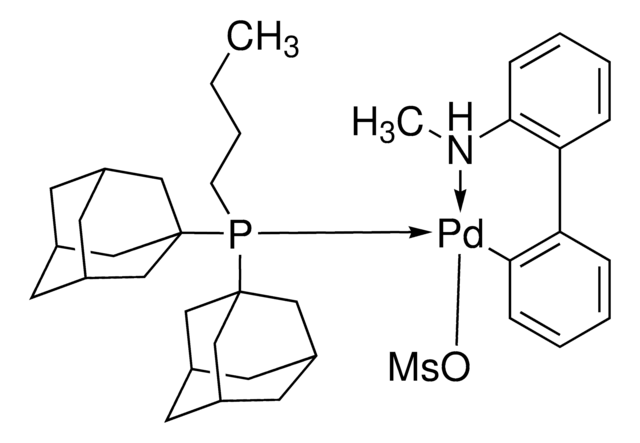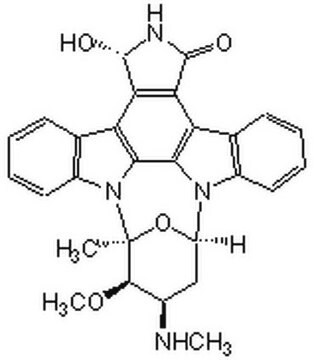SRP3155
SLIT-2-N human
recombinant, expressed in HEK 293 cells, ≥98% (SDS-PAGE), ≥98% (HPLC), suitable for cell culture
Synonym(e):
SLIL3, Slit homolog 2 protein
Anmeldenzur Ansicht organisationsspezifischer und vertraglich vereinbarter Preise
Alle Fotos(1)
About This Item
UNSPSC-Code:
12352202
NACRES:
NA.32
Empfohlene Produkte
Biologische Quelle
human
Rekombinant
expressed in HEK 293 cells
Assay
≥98% (HPLC)
≥98% (SDS-PAGE)
Form
lyophilized
Mol-Gew.
120.0-140.0 kDa
Verpackung
pkg of 200 μg
pkg of 25 μg
Methode(n)
cell culture | mammalian: suitable
Verunreinigungen
<0.1 EU/μg endotoxin, tested
Farbe
white
UniProt-Hinterlegungsnummer
Versandbedingung
wet ice
Lagertemp.
−20°C
Angaben zum Gen
human ... SLIT2(9353)
Allgemeine Beschreibung
Slit guidance ligand 2 (SLIT-2) is a member of the Slit family that signals through the Roundabout (Robo) receptor. It is also referred to as SLIL3. SLIT2 is expressed primarily in the fetal lung, kidney, and adult spinal cord, and to a lesser extent in adult adrenal gland, thyroid and trachea. It is initially synthesized as a 1499 amino acid precursor, which is subsequently cleaved into N-terminal and C-terminal fragments, designated as Slit2-N and Slit2-C respectively. The neurodevelopment related activities, as measured by the ability to repel olfactory bulb axons and to induce branching in dorsal root ganglia axons, are contained only in the N-terminal fragment. Recombinant human Slit2-N is a 1093 amino acid glycoprotein corresponding to the N-terminal portion of the full length Slit2 precursor. Due to glycosylation Slit2-N migrates at an apparent molecular weight of approximately 120.0-140.0kDa by SDS-PAGE analysis under reducing conditions.
Anwendung
Slit guidance ligand 2 (SLIT-2) has been used to treat cells in podocyte culture and in myosin II regulatory light chain (MRLC) phosphorylation assay.
Biochem./physiol. Wirkung
Slit guidance ligand 2 (SLIT-2) acts as a repellent for axon guidance and neuronal migration, and it can also act as a chemoattractant to vascular endothelial cells and a chemotaxis inhibitor for leukocytes. It prevents the migration of T cells, neutrophils and macrophages, but enhances eosinophil migration. The protein has been shown to be downregulated in cancers.
Sequenz
QACPAQCSCS GSTVDCHGLA LRSVPRNIPR NTERLDLNGN NITRITKTDF AGLRHLRVLQ LMENKISTIE RGAFQDLKEL ERLRLNRNHL QLFPELLFLG TAKLYRLDLS ENQIQAIPRK AFRGAVDIKN LQLDYNQISC IEDGAFRALR DLEVLTLNNN NITRLSVASF NHMPKLRTFR LHSNNLYCDC HLAWLSDWLR QRPRVGLYTQ CMGPSHLRGH NVAEVQKREF VCSGHQSFMA PSCSVLHCPA ACTCSNNIVD CRGKGLTEIP TNLPETITEI RLEQNTIKVI PPGAFSPYKK LRRIDLSNNQ ISELAPDAFQ GLRSLNSLVL YGNKITELPK SLFEGLFSLQ LLLLNANKIN CLRVDAFQDL HNLNLLSLYD NKLQTIAKGT FSPLRAIQTM HLAQNPFICD CHLKWLADYL HTNPIETSGA RCTSPRRLAN KRIGQIKSKK FRCSAKEQYF IPGTEDYRSK LSGDCFADLA CPEKCRCEGT TVDCSNQKLN KIPEHIPQYT AELRLNNNEF TVLEATGIFK KLPQLRKINF SNNKITDIEE GAFEGASGVN EILLTSNRLE NVQHKMFKGL ESLKTLMLRS NRITCVGNDS FIGLSSVRLL SLYDNQITTV APGAFDTLHS LSTLNLLANP FNCNCYLAWL GEWLRKKRIV TGNPRCQKPY FLKEIPIQDV AIQDFTCDDG NDDNSCSPLS RCPTECTCLD TVVRCSNKGL KVLPKGIPRD VTELYLDGNQ FTLVPKELSN YKHLTLIDLS NNRISTLSNQ SFSNMTQLLT LILSYNRLRC IPPRTFDGLK SLRLLSLHGN DISVVPEGAF NDLSALSHLA IGANPLYCDC NMQWLSDWVK SEYKEPGIAR CAGPGEMADK LLLTTPSKKF TCQGPVDVNI LAKCNPCLSN PCKNDGTCNS DPVDFYRCTC PYGFKGQDCD VPIHACISNP CKHGGTCHLK EGEEDGFWCI CADGFEGENC EVNVDDCEDN DCENNSTCVD GINNYTCLCP PEYTGELCEE KLDFCAQDLN PCQHDSKCIL TPKGFKCDCT PGYVGEHCDI DFDDCQDNKC KNGAHCTDAV NGYTCICPEG YSGLFCEFSP PMV
Physikalische Form
Lyophilized from 20 mM Tris + 200 mM L-Arginine, pH 8.8.
Rekonstituierung
Centrifuge the vial prior to opening. Reconstitute in 20mM Tris, pH 8.8 + 150mM NaCl to a concentration of 0.1-1.0mg/ml. Note: Slow to dissolve. Do not vortex. This solution can be stored at 2-8°C for up to 1 week. For extended storage, it is recommended to further dilute in a buffer containing a carrier protein (example 0.1% BSA) and store in working aliquots at -20°C to -80°C.
Lagerklassenschlüssel
11 - Combustible Solids
WGK
WGK 3
Flammpunkt (°F)
Not applicable
Flammpunkt (°C)
Not applicable
Hier finden Sie alle aktuellen Versionen:
Besitzen Sie dieses Produkt bereits?
In der Dokumentenbibliothek finden Sie die Dokumentation zu den Produkten, die Sie kürzlich erworben haben.
John A Legg et al.
Angiogenesis, 11(1), 13-21 (2008-02-12)
Angiogenesis describes the development of new blood vessels from pre-existing vessels. The hijacking of this physiological process by tumours allows them to develop their own supplies of nutrients and oxygen, enabling their growth and metastasis. A large body of literature
SLIT2/ROBO2 signaling pathway inhibits nonmuscle myosin IIA activity and destabilizes kidney podocyte adhesion.
Fan X
Insight (American Society of Ophthalmic Registered Nurses), 1(19), e86934-e86934 (2016)
Yang Li et al.
Neuroreport, 28(2), 75-81 (2016-11-29)
Neuronal network reconstruction is a pivotal determinant for functional recovery after spinal cord injury (SCI), the process of which includes synaptogenesis. Slit2 protein has been identified as a key regulator of axon regeneration and synapse formation in the vertebrate. Meanwhile
Rachel E Dickinson et al.
Reproduction (Cambridge, England), 139(4), 697-704 (2010-01-27)
The secreted SLIT glycoproteins and their Roundabout (ROBO) receptors were originally identified as important axon guidance molecules. They function as a repulsive cue with an evolutionarily conserved role in preventing axons from migrating to inappropriate locations during the assembly of
The differential roles of Slit2-exon 15 splicing variants in angiogenesis and HUVEC permeability.
Yang YC
Angiogenesis, 18(3), 301-312 (2015)
Unser Team von Wissenschaftlern verfügt über Erfahrung in allen Forschungsbereichen einschließlich Life Science, Materialwissenschaften, chemischer Synthese, Chromatographie, Analytik und vielen mehr..
Setzen Sie sich mit dem technischen Dienst in Verbindung.
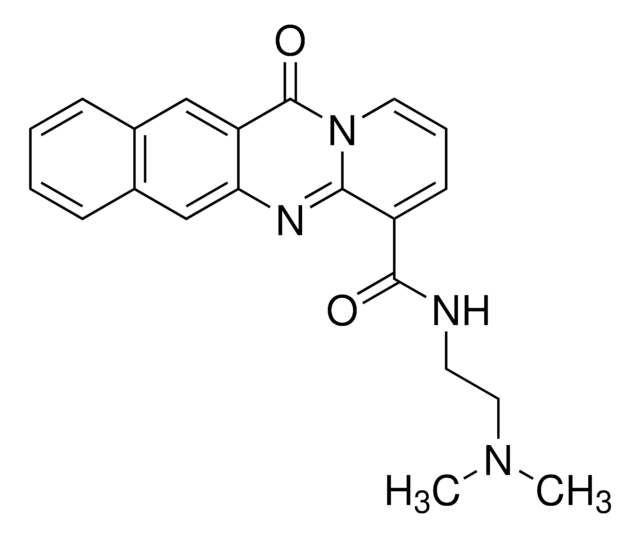

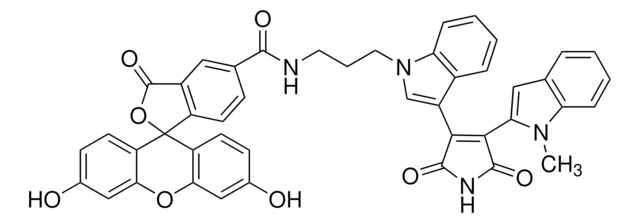
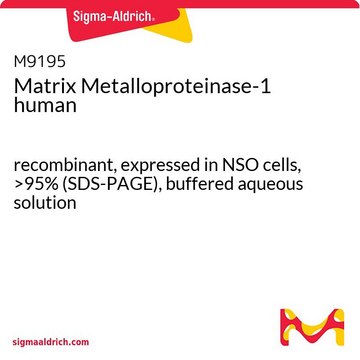

![1,8-Diazabicyclo[5.4.0]undec-7-en (1,5-5) 98%](/deepweb/assets/sigmaaldrich/product/structures/120/564/5b373e23-1624-489c-8efb-692de0f96ffb/640/5b373e23-1624-489c-8efb-692de0f96ffb.png)
